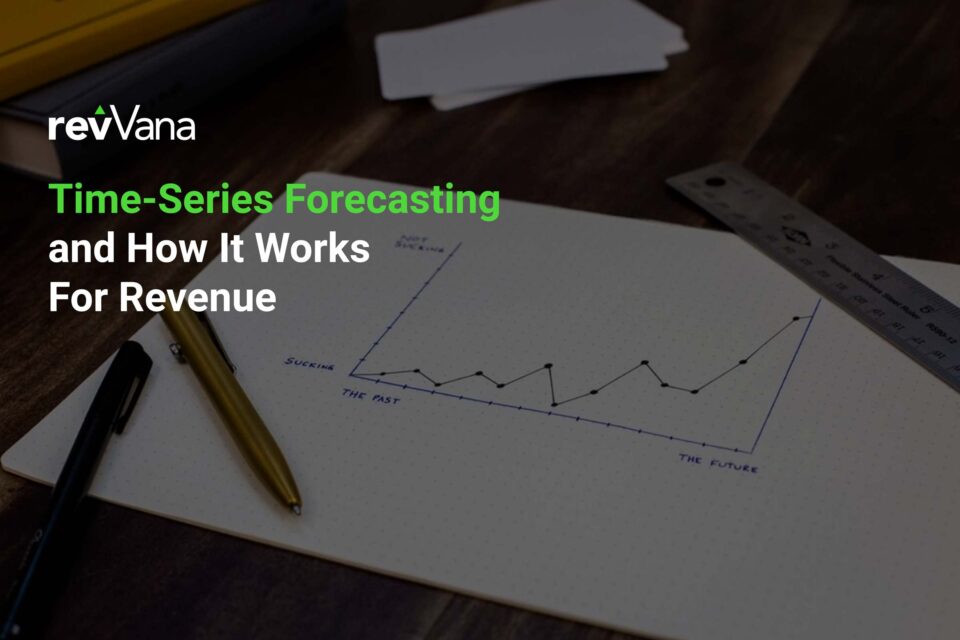

What Is Revenue Operations (RevOps) and Why Is It Important?
Learn about Revenue Operations (RevOps) as a strategy to align siloed revenue teams within B2B and B2C companies and unify revenue goals and targets.

Published on Monday, May 10, 2021
Time-series forecasting forms part of a range of data science techniques that are quite famous in the business world. These techniques aim to determine future monthly recurring revenue (MRR). It can also help to predict annual recurring revenue and help you to see what the future financial growth and health of your company will be like.
Here, we will focus specifically on what time-series forecasting is and how it can help you assess your company’s future revenue. We will also delve into how it can either benefit or negatively influence the financial health of your organization.
Time-series forecasting is a data-based science technique frequently employed in the world of business. It aims to estimate future data values based on your company’s historic data. This forecasting technique can be leveraged to determine important company metrics, such as the number of new customer sign-ups or your monthly recurring revenue.
The more accurate your time-series forecasting is, the better you can estimate certain metrics. As a result, you will be able to make better business decisions that are based on historic trends. When making use of time-series forecasting, one looks at datasets that document cyclical fluctuations, behavioral patterns, or even certain seasonal trends.
For example, you might be able to accurately predict a company’s monthly subscription volume 12 months from now by looking at that company’s historic data. This is a relatively common practice but doesn’t necessarily only have to measure metrics on an annual scale. In other words, you can develop monthly forecasts or even weekly forecasts as well, if it will better benefit your business.
When dealing with a sales forecasting problem that is tackled from a time-series perspective, the three fundamental things to consider are repeating patterns, static patterns, and trends.
By uncovering these three fundamental factors specifically about what services and products you have to offer and the resulting impact it has on your monthly revenue, you may have a clearer indication of how to navigate future financial hurdles.
You will have a good grasp of which products work and which do not sell well. Therefore, time-series forecasting can help you to make informed decisions that could ultimately aid the growth of your company.

When it comes to revenue forecasting, your income statements, balance sheets, or cash flow statements can provide useful insight that could aid your sales team. By looking at historic data, you can set realistic goals, see where you can increase earnings, and compensate for the quieter months throughout the year.
However, in order to do all of this you first need to understand when and how revenue is recognized. According to GAAP best practices when using the accrual accounting method, revenue is only recognized when earned by the company, and not when the funds are collected or when deposited into your bank account.
SaaS businesses mostly forecast based on their annual recurring revenue (ARR). Due to the emergence of the subscription model in sales, ARR has become a popular metric of success.
In other words, if you want to drive revenue growth, it would be a good idea to focus on that number. If you sell things based on a subscription business model and make money from one-time services, it would also be important to track and forecast those transactions too.
When analyzed carefully by looking at repeating patterns, static patterns, and trends, the historic data of earned revenue can assist in creating a forecast of future revenue.
When using time-series forecasting for revenue or sales, there are a couple of steps you must follow to see that your forecast is as accurate as possible. Here’s what you need to do:
Any company’s revenue will probably be logged and stored into one or more of their systems, which should be easy enough to access. The more historic data you have, the better, because you will have more financial trends and patterns to draw from.
In this step, you have to go through the financial data you have selected and remove the columns you don’t need. Also, be sure to fill in any missing values to ensure accurate results and aggregate revenue by date and other distinguishing criteria.
Depending on how the data was captured, and how your systems export it, date-driven data can be complex to maneuver. If necessary, you can use averages when it comes to pinpointing daily revenue values for a specific month instead and use the beginning of each month as the timestamp.
When you visualize your data by plotting it on a graph, you will see some distinguishing patterns start to appear. Time-series forecasting usually has a seasonality pattern seeing as revenue is tied to sales.
Many businesses experience low revenue at the beginning of the year. This usually increases, with businesses seeing higher revenue towards the end of the year. If your business is flourishing, you should see an upward trend in any given year, with, perhaps, one or two low months sprinkled in between.
Time-series revenue forecasting is based on a quantitative forecasting model. Lots of businesses often choose quantitative forecasting because it is data-driven and takes your personal company history into account. When done correctly, organizations can land within a +/-5% range of their initial forecast.
However, there are also certain drawbacks to relying on this method. For your forecast to be as accurate as it possibly can be, your dataset must be highly accurate, the correct analysis of historic financial performance must be done, and you need complete visibility into your sales pipeline.
Below are the pros and cons of this method of forecasting.
It should be noted that time-series forecasting is mostly beneficial if the data you are working with is accurate and correctly entered into your systems. For the most part, the pros outweigh the cons if you do decide to use this method of forecasting to aid your company’s financial wellbeing.

If done right, revenue forecasting using a time-series forecasting approach can be one of the most effective ways to determine your business’s future revenue. Based on this information, you can make informed decisions when it comes to hiring employees, strategic planning, attracting investors and so much more.
If you would like more information regarding time-series forecasting and how we can aid your company in forecasting its revenue, don’t hesitate to call us at revVana!